It looks like you're using an Ad Blocker.
Please white-list or disable AboveTopSecret.com in your ad-blocking tool.
Thank you.
Some features of ATS will be disabled while you continue to use an ad-blocker.
share:
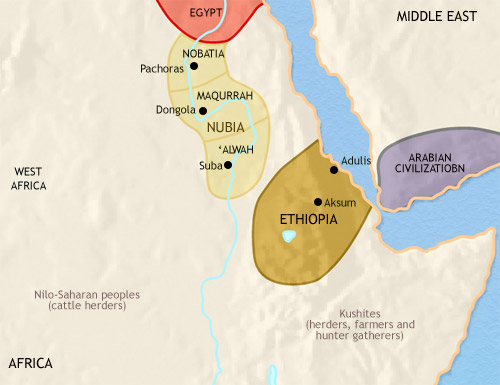
The Byzantine aka Eastern Roman influence in Africa was great and wide spread , I suspect that even the nomadic Tuareg were at onetime so influenced, the Tuareg crosses came to mind that looked suspiciously like eastern crosses and Ethiopian crosses, although they showed little sign of ever being Christians so perhaps they mainly utilized the crosses if they got it from Byzantine controlled coastal North Africa.
THE BYZANTINE PERIOD
North Africa held an important place in the emperor Justinian’s scheme for reuniting the Roman Empire and destroying the Germanic kingdoms. His invasion of Africa was undertaken against the advice of his experts (an earlier attempt in 468 had failed disastrously), but his general Belisarius succeeded, partly through Vandal incompetence. He landed in 533 with only 16,000 men, and within a year the Vandal kingdom was destroyed. A new administrative structure was introduced, headed by a praetorian prefect with six subordinate governors for civil matters and a master of soldiers with four subordinate generals.
global.britannica.com...
Justinian was the one who shut the doors forever at the temple of Isis in Upper Egypt a competitor for souls and among the last strong hold for Egyptian and Meroitic adherents to Isis, However far to the South Christianity would enter through the back door even earlier at about 350 A.D, mainly through the Axumite Empire when two captives one a Syrian Christian named Frumentius, called Abba Salama in Ethiopian versions came to convert Ezana who would eventually put the lights out on Meriotic Kush, so being sandwiched between two Christian powers it would only be a matter of time before the Nubians bow to the changes of the tide.
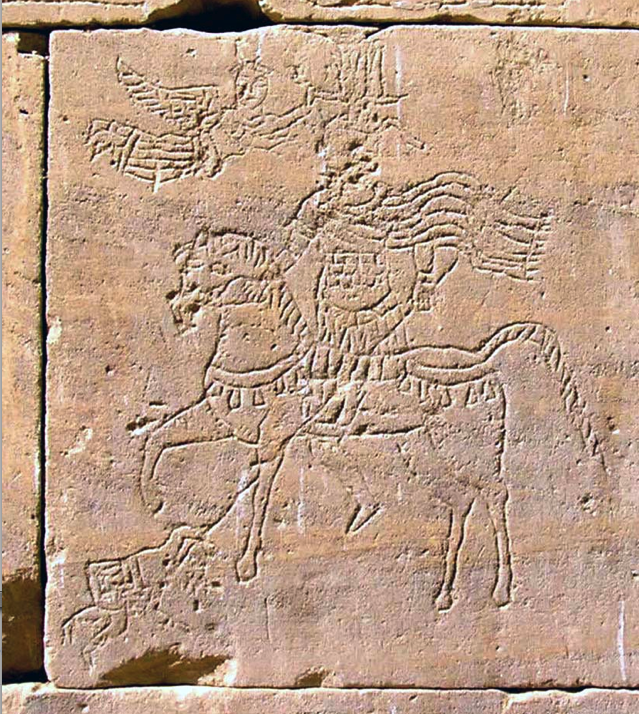
Silko King of Christian Nobatia The first Christian King Of A Nubian Kingdom:
Three Nubian kingdoms arose on the ruins of Meroitic power and are first known to history from the accounts of sixth century missionary ACTIVITY given by the Syrian writer John of Ephesus. In the north, from the First to the Third Cataracts, was the kingdom of Nobatia, with its capital at Faras; south of it and stretching as far as the place known to Arab writers as El Abwab, ‘the doors’, thought to be near the modern village of Kabushia, was Makuria, with its capital at Old Dongola; and further south again, the kingdom of Alwah (or Alodia), whose capital, Soba, is close to Khartoum.
During all this time (after the christianization of Nobatia in the 5th century) these remote kingdoms on the Middle Nile were cut off from the rest of the Christian world by the Muslim occupation of Egypt (640-'42). Yet they were strong enough to resist Muslim encroachment and even to threaten Muslim positions in Egypt, making a treaty with the Caliph of Baghdad and occupying southern Egypt in 962. Not until 1173 did there come the first big Muslim raid by Saracen cavalry from the north. A startling panorama of the wealth and distinction of their religious life was revealed in 1961-‘64 by Polish excavations at Faras under the leadership of Kazimierz
www.hubert-herald.nl/SudanC.htm
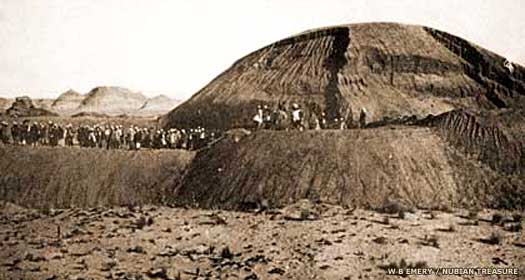
Massive Burial Mounds at Ballana of the Christian Kings


Although Christian these early Kings and Queens held on to some of their pre-Christian symbols for sometime

A page from an Old Nubian translation of Liber Institutionis Michaelis Archangelis from the 9th–10th century, found at Qasr Ibrim, now housed in the British Museum. The name of Michael appears in red.
Makuria
edit on 25-2-2015 by Spider879 because: (no reason given)
Very nice, informative thread!
Do you happen to have any more information on this artifact (what is it, where was it found)? I find it quite striking and beautiful.

Do you happen to have any more information on this artifact (what is it, where was it found)? I find it quite striking and beautiful.

edit on 2/25/2015 by AdmireTheDistance because: (no reason given)
a reply to: Spider879
Awesome peak. Though reminders of Isis temples shutting down is always sad.
People seem to ignore the pre-industrial revolution colonial Africa. It had huge thriving kingdoms before all the northern folks started spreading the exploitation. The irony is that early relations led to a stronger Roman army (the Numedians pretty much revolutionized Roman cavalry) which led to a stronger kingdom building in Africa only to be torn apart by descendants of those very same people.
When people see the images of Africa today, it's difficult to imagine large medieval-style infrastructures. Christianity was a very mixed blessing in the beginning for Africa and only went on as a curse after European colonization.
Awesome peak. Though reminders of Isis temples shutting down is always sad.
People seem to ignore the pre-industrial revolution colonial Africa. It had huge thriving kingdoms before all the northern folks started spreading the exploitation. The irony is that early relations led to a stronger Roman army (the Numedians pretty much revolutionized Roman cavalry) which led to a stronger kingdom building in Africa only to be torn apart by descendants of those very same people.
When people see the images of Africa today, it's difficult to imagine large medieval-style infrastructures. Christianity was a very mixed blessing in the beginning for Africa and only went on as a curse after European colonization.
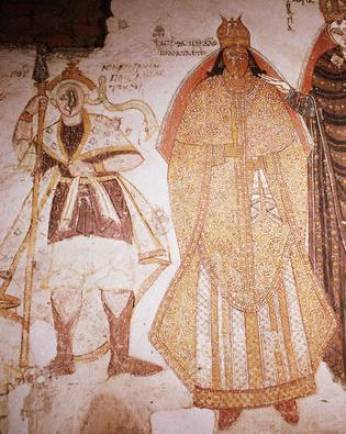
The Virgin Mother and Child touching the queen with guard in toe

An image of the Virgin Mother and Child keep in mind that the mother and child pre-dates the Byzantine images in this part of the world by thousands of years.

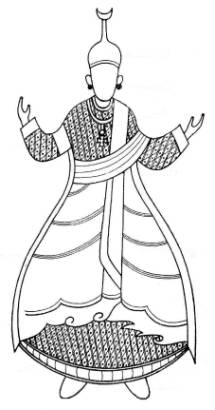
High Fashion in a combined Nubian and Byzantine style.

Nubian Bishop

Nubian Bishop Under The Protection Of the holy father

Nubian Bishop under the protection Of Mary
A curious thing the Axumites futher south while just as influenced by the Byzantines art non the least ditched the European image of the Holy family,the Byzantines themselves would sometimes present a Black holy family to Europeans especially the Mother and Child imagery.

The Sun motif:The coat of arms of “The King of Bougis”

Symbols of Military Rank: The White, a black patriarchal cross / white a black patriarchal cross an a red bordure

Nubian eparch on a fresco in Abd el-Qadir. On his apron medaillons with double eagles.
Detail of the so-called dove-frieze in the ancient Faras-Cathedral, early 7th c. A.D.

Egyptian troops and Nubian crusaders in the manuscript of Marino Sanudo
This shows a group of knights chasing another with the banner of Alexandria. The knights themselves, of fairly black complexion, have a red triple cross on a yellow field on their shields and on the horse clothes of their commander.
www.hubert-herald.nl...
The above might be a reminder of the defeat of the Islamic forces when they burst on to the scene in the 7th cent A.D
Makuria was one of the few states in the world to repulse Muslim invasions led by the Rashidun Caliphate when they defeated an Arab army at the First Battle of Dongola in 642. The Arabs had taken Egypt in 641, and the jihad soon turned south. Makuria repeated the feat in 652 at the Second Battle of Dongola. Arab writers noted the Makurians' skill as archers in both battles. One of the few major defeats suffered by an Arab army in the first century of Islamic expansion, it led to an unprecedented agreement: the bakt. This treaty guaranteed peaceful relations between the two sides. The Nubians agreed to give Arab traders more privileges of trade in addition to a share in their slave trading, while the Egyptians may have been obliged to send manufactured goods south.
Makuria seems to have been stable and prosperous during the 8th and 9th centuries. During this period Egypt was weakened by frequent civil wars, and there was thus little threat of invasion from the north. Instead it was the Nubians who intervened in the affairs of their neighbor. Much of Upper Egypt was still Christian, and it looked to the Nubian kingdoms for protection. One report has a Nubian army sacking Cairo in the 8th century to defend the Christians
Near East in 700 AD, showing Makuria and its neighbors
At some point Makuria merged with Nobatia to the north
rumkatkilise.org...
In other words while they were not a super power unlike the Axumites they were powerful enough to give the all conquering Muslims a black eye if needs be.

Stone acrade to the entrance of the Place
Palace on Sai Island Kingdom of MAKURIA

Notice the cross on the standing Pillar

Ruins of the Church of the columns at Old Dongola (II - IX - century A.D). Old Dongola was the capital of the Christian Kingdom of Makuria.
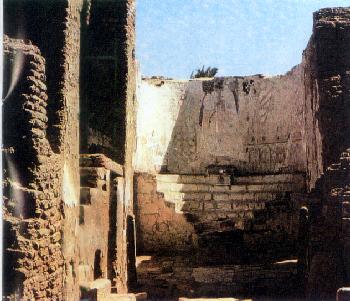
Apse with the synthronon, Faras Cathedral
The great majority of these churches were built of sun dried bricks and consequently, they are still only found in a reasonable state of repair in the almost rainless areas of the north. A few larger and more important ones were built of stone, such as two at Faras, and the large monastic church at Ghazali.
a reply to: AdmireTheDistance
files.abovetopsecret.com...
Looks a bit egyption for me.
Aren't those eyes's of horus along the side?
Eye of Horus
I think it's handed down treassure or they went some grave digging themselves
files.abovetopsecret.com...
Looks a bit egyption for me.
Aren't those eyes's of horus along the side?
Eye of Horus
I think it's handed down treassure or they went some grave digging themselves
edit on 25-2-2015 by EartOccupant because: (no reason
given)
Love these threads hope to see more of them.
Yes please on Axum, I've heard of them but the few times I've looked info seems to be kind of sparse.
Yes please on Axum, I've heard of them but the few times I've looked info seems to be kind of sparse.
a reply to: AdmireTheDistance
It's a cricketing trophy, as anyone can see from the decorations round the top. Crown for Best Batsman, probably...
It's a cricketing trophy, as anyone can see from the decorations round the top. Crown for Best Batsman, probably...

Commemorative stone detailing the conversion of Ezana Of Axum:
Very few Christian nations of the medieval era outside of the Byzantines proper have had such a profound effect on the world by what they chose to do or not do, we all know it is generally bad science to play a game of what ifs when in comes to historical events, but in this case bare with me.

The inscription is now dated 552ce and reads:
"With the power of the Almighty, and His Messiah King Abraha Zeebman, the King of Saba'a, Zuridan, and Hadrmaut and Yemen and the tribes (on) the mountains and the coast wrote these lines on his battle against the tribe of Ma'ad (in) the battle of al-Rabiya in the month of "Dhu al Thabithan" and fought all of Bani A'amir and appointed the King Abi Jabar with Kinda and Al, Bishar bin Hasan with Sa'ad, Murad, and Hadarmaut in front of the army against Bani Amir of Kinda. and Al in Zu Markh valley and Murad and Sa'ad in Manha valley on the way to Turban and killed and captured and took the booty in large quantities and the King and fought at Halban and reached Ma'ad and took booty and prisoners, and after that, conquered Omro bin al-Munzir. (Abraha) appointed the son (of Omro) as the ruler and returned from Hal Ban (halban) with the power of the Almighty in the month of Zu A'allan in the year sixty-two and six hundred."
www.religionforums.org...

In about 520 A.D the Axumites made their 3rd invasion of Arabia this time as Christians, instead of pagans??.[Hate that term.]..under general Abraha the scared face who later severed ties with his Axumite overlord, but for him Arabia might have been Jewish and Islam crushed before before the Prophet Muhammad was born , the people of the book might have remained two .
During the time of crisis when the prophet Muhammad and his followers had to flee, some them key figures at the time fled to the Axumite court seeking protection, what if in stead of protecting them the King of that time had enslaved or turned them over to their persecutors, it is very possible that the world as we know it today would be quite different place, such was the importance of Christian Axum.
A matter of fact they were regarded as one of four super powers at the time along side Byzantine empire, Persia and China , while they were on friendly terms with the Byzantines they non the less tried to under mine their influence in-terms of economics and trade, as far the Persians they had many running battles with them over areas in the middle east, they also made certain claims that they controlled parts of India, a boast I once considered unlikely except that the coins, made it seemed that way.
Kebra Nagast
And [the Queen] returned and encamped in the city of ZION, and they remained therein three months, then their wagons moved on and came to the city of the p. 166 Government. And in one day they came to the city of SÂBÂ, and they laid waste NÔBÂ; and from there they camped round about SÂBÂ, and they laid it waste as far as the border of EGYPT. And the majesty (or, awe) of the King of ETHIOPIA was so great that the King of MĔDYÂM and the King of EGYPT caused gifts to be brought unto him, and they came into the city of the Government, and from there they encamped in ’AB‛ÂT, and they waged war on the country of INDIA, and the King of INDIA brought a gift and a present (or, tribute), and himself did homage to the King of ETHIOPIA. He (i.e., DAVID) waged war wheresoever he pleased; no man conquered him, on the contrary, whosoever attacked him was conquered. www.abovetopsecret.com...
www.rosetta.bham.ac.uk...
The sudden appearance and disappearance of Aksumite coins in the Indian Ocean region in the late third century remains an enigmatic clue to a dynamic phase of international trade and diplomacy. This study will explore how the Aksumite kingdom of Ethiopia used imitation of Byzantine coins as part of its strategy to usurp the role of the eastern Roman Empire in long-distance trade with the East. These coins demonstrate a flourishing and self-confident polity, but also illustrate the importance of cultural tradition in the pursuit of maritime trade
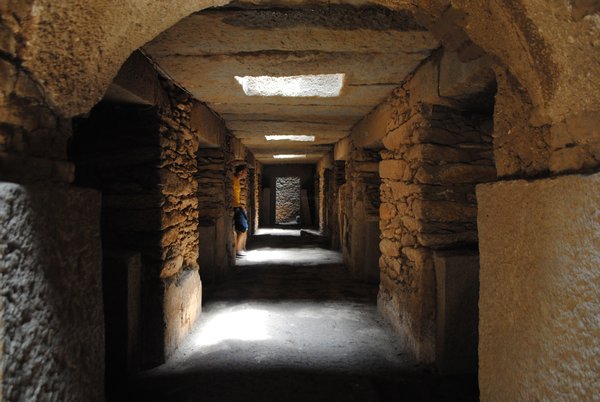
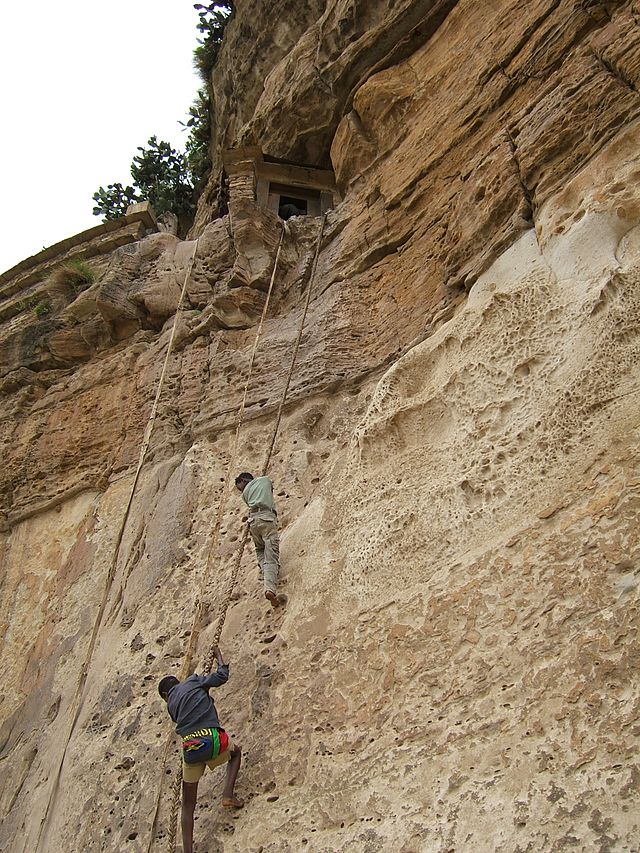
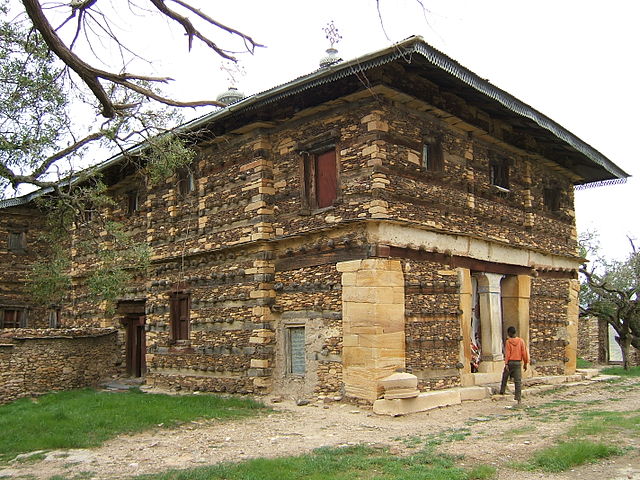
edit on
27-2-2015 by Spider879 because: (no reason given)




Axumite castle late medieval era


Rock Hewn Churches at Lalibela ,created by Gebre Mesqel Lalibela of the Zagwe dynast 12th century 11 of these churches were built.
Gebre Mesqel spent time in Jerusalem as a royal fugitive where the Axumites had their own Church where their pilgrims could visit , apparently their fortunes changed when Saladin captured Jerusalem and the Greek Orthodox with whom they had a running argument with was evicted in favor of that body,they were thus reduced to settle for a small chapel atop of the Church,when Lalibela return to Axum and assumed the role of emperor he sought to build a new Jerusalem in his own country thus creating these wonderful works.

Ethiopian Church in Jeruselam

Ethiopian or Axumite Version of the story of Soloman and Sheba to which the last Dynasty claimed a blood tie, that tradition is currently promoted by the Rastafarians
I could go into the Christian Kingdom of The Kongo, but I'll shelved that for another time and thread.
In conclusion Africans were no strangers to any of the three Abrahamic religions, they had participated it their formation as individuals and nations, I could argue the point that the Abrahamic traditions drank deeply from the well of African traditional religions, but that's not the point of this thread..hope you guys enjoyed.
edit on 27-2-2015 by Spider879 because: (no reason given)
originally posted by: Spider879
Axumite castle late medieval era
Rock Hewn Churches at Lalibela ,created by Gebre Mesqel Lalibela of the Zagwe dynast 12th century 11 of these churches were built.
Gebre Mesqel spent time in Jerusalem as a royal fugitive where the Axumites had their own Church where their pilgrims could visit , apparently their fortunes changed when Saladin captured Jerusalem and the Greek Orthodox with whom they had a running argument with was evicted in favor of that body,they were thus reduced to settle for a small chapel atop of the Church,when Lalibela return to Axum and assumed the role of emperor he sought to build a new Jerusalem in his own country thus creating these wonderful works.
Ethiopian Church in Jeruselam
Ethiopian or Axumite Version of the story of Soloman and Sheba to which the last Dynasty claimed a blood tie, that tradition is currently promoted by the Rastafarians
I could go into the Christian Kingdom of The Kongo, but I'll shelved that for another time and thread.
In conclusion Africans were no strangers to any of the three Abrahamic religions, they had participated it their formation as individuals and nations, I could argue the point that the Abrahamic traditions drank deeply from the well of African traditional religions, but that's not the point of this thread..hope you guys enjoyed.
Yet again , fantastic stuff spider.
The middle decades of the sixth century are , arguably , the most important in the last 2000 years of human history.
The triple whammy of 2 major volcanic eruptions
(Iceland,520"s and krakatoa,530s-540s), and a likely close pass of halleys comet with a possible impact of fragments in the gulf of carpenteria, and off the coast of Norway, degraded and or affected the climate for a couple of centuries to come.
The formation of Islam is directly related to the change in climate. The overall drop in temps allowed the topically benign yersinia pestis to transform into the deadly bubonic plague, as it was brought from east Africa to Europe by the first direct trade with the eastern empire in 535.
The plagues and terrible climate lead to the Roman abandonment of Britain.
It also ushers in the north European mild period that allowed for the Viking population explosion and subsequent Viking expansion.
The major droughts that pushed the Maya into steep decline also can trace thier origins to this time period.
a reply to: Spider879
I read somewhere recently that the original Jews were black..
How true is that?
Not that it really matters topically but when it comes down to usurping a religion and claiming it as your own with the lineage to support whats very important to the jewish population, which is lineage.
I read somewhere recently that the original Jews were black..
How true is that?
Not that it really matters topically but when it comes down to usurping a religion and claiming it as your own with the lineage to support whats very important to the jewish population, which is lineage.
edit on 2/27/2015 by onequestion because: (no reason given)
a reply to: punkinworks10
Climate change, either man made or nature will produce CHANGE! and mostly not in a good way, thanks for adding the work of nature very important in understanding how we are moved by it's force sometimes unseen but certainly felt.
Climate change, either man made or nature will produce CHANGE! and mostly not in a good way, thanks for adding the work of nature very important in understanding how we are moved by it's force sometimes unseen but certainly felt.
Yes Moses took a Nubian Bride and was not allowed back into what is now called Israel, After he led his people back there. They denied him entrance
because Jewish doctrine is bigotry. When they initially settled there from Samaria, now Kuwait. They would not only kill the Canaanite that lived
there. They treated them like second class people just like Palestinians. That was not their land, they stole it long ago. They lay claim and steal
still. Evil greedy people. Why so many support them i do not know. Christians especially. They begged more than once to have Romans kill Jesus. Until
they finally got their way.
originally posted by: onequestion
a reply to: Spider879
I read somewhere recently that the original Jews were black..
How true is that?
Not that it really matters topically but when it comes down to usurping a religion and claiming it as your own with the lineage to support whats very important to the jewish population, which is lineage.
Judaism or Jews/Hebrews is a religion, not unlike Christians, Muslims or other adherents of different religions they tend to Black,White, yellowish brown with all types of features, if we go back as far as the proto Hebrews who claimed they came from the city of Ur or Chaldea then we are speaking of a Black or very dark skinned folks of non recent African origins, most likely resembling an Australoid, as they roamed about they would add to their numbers from the various folks they would encounter,so they would fluctuate,genetically some are related to Africans as they carry the E maker, and according to linguist Christopher Ehret, Semitic belonged to the Afrasian super language family that spread out from east Africa to adjacent middle east sometime around 5000yrs B.C

Afrasian Language distribution map

E distrinuttion map
However neither language nor genetic map can give you a clue to what they might of looked like day to day only a starting point of where "some" of their ancestors originated.
Art doesn't really fix anything down, they are shown sometimes in sculptures to what look like what a runof the mill black may looked like and other times quite different, in one middle age manuscript one Rabbi described his community.
An impeccable Hebrew source (not even Aramaic) is
the Pirqe de Ribbi Eli`ezer who classed the entire
Shemitic people as black..thus
Shem was especially blessed black and beautiful,
Hham was blessed black like the raven, and
Yapheth was blessed white all over.
archive.org...
So a lot depend on time and geography.
a reply to: Spider879
Spider,
This doesn't specifically have to do with this thread, but I am sure you will find it informational,
Ancient North African cattle
The paper talks about the link between African languages and the domestication of cattle..
Spider,
This doesn't specifically have to do with this thread, but I am sure you will find it informational,
Ancient North African cattle
The paper talks about the link between African languages and the domestication of cattle..
edit on 2-3-2015 by punkinworks10 because: (no reason given)
originally posted by: punkinworks10
a reply to: Spider879
Spider,
This doesn't specifically have to do with this thread, but I am sure you will find it informational,
Ancient North African cattle
The paper talks about the link between African languages and the domestication of cattle..
Thanks Punkinworks you are a champ, alot of reading to do on that link but I know it will be informative.
new topics
-
Putin, Russia and the Great Architects of the Universe
ATS Skunk Works: 20 minutes ago -
A Warning to America: 25 Ways the US is Being Destroyed
New World Order: 4 hours ago -
President BIDEN's FBI Raided Donald Trump's Florida Home for OBAMA-NORTH KOREA Documents.
Political Conspiracies: 10 hours ago
top topics
-
President BIDEN's FBI Raided Donald Trump's Florida Home for OBAMA-NORTH KOREA Documents.
Political Conspiracies: 10 hours ago, 28 flags -
A Warning to America: 25 Ways the US is Being Destroyed
New World Order: 4 hours ago, 10 flags -
Gaza Terrorists Attack US Humanitarian Pier During Construction
Middle East Issues: 16 hours ago, 8 flags -
Las Vegas UFO Spotting Teen Traumatized by Demon Creature in Backyard
Aliens and UFOs: 15 hours ago, 6 flags -
2024 Pigeon Forge Rod Run - On the Strip (Video made for you)
Automotive Discussion: 16 hours ago, 4 flags -
Is AI Better Than the Hollywood Elite?
Movies: 12 hours ago, 3 flags -
Maestro Benedetto
Literature: 12 hours ago, 1 flags -
Putin, Russia and the Great Architects of the Universe
ATS Skunk Works: 20 minutes ago, 0 flags
active topics
-
A Warning to America: 25 Ways the US is Being Destroyed
New World Order • 8 • : Shoshanna -
SETI chief says US has no evidence for alien technology. 'And we never have'
Aliens and UFOs • 75 • : Hecate666 -
Las Vegas UFO Spotting Teen Traumatized by Demon Creature in Backyard
Aliens and UFOs • 13 • : FlyersFan -
Putin, Russia and the Great Architects of the Universe
ATS Skunk Works • 4 • : CosmicFocus -
Mood Music Part VI
Music • 3105 • : BrucellaOrchitis -
The Acronym Game .. Pt.3
General Chit Chat • 7752 • : bally001 -
Is AI Better Than the Hollywood Elite?
Movies • 18 • : Hecate666 -
Hate makes for strange bedfellows
US Political Madness • 49 • : network dude -
Truth Social goes public, be careful not to lose your money
Mainstream News • 131 • : burritocat -
Cars and Coffee - Knoxville, TN 2023
Automotive Discussion • 12 • : adamfrank
